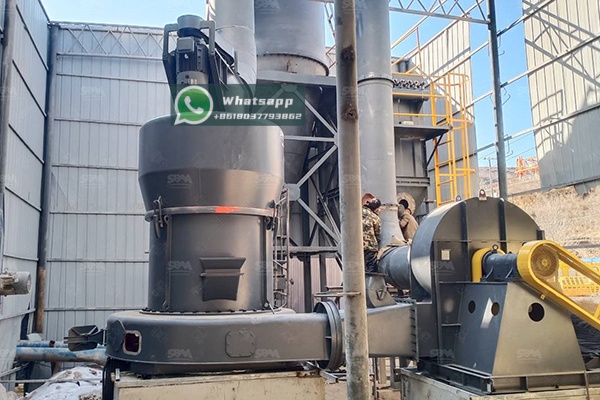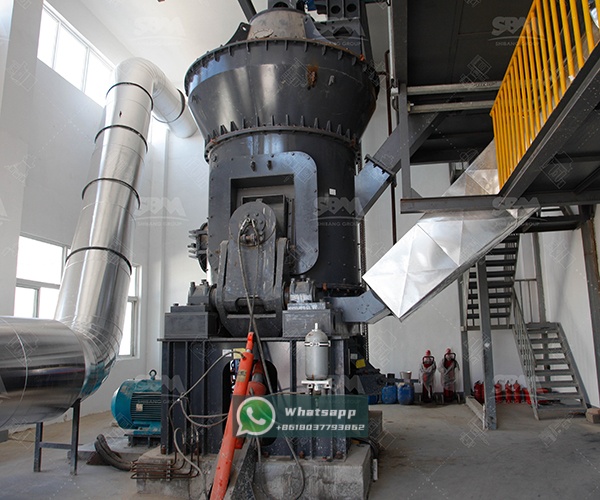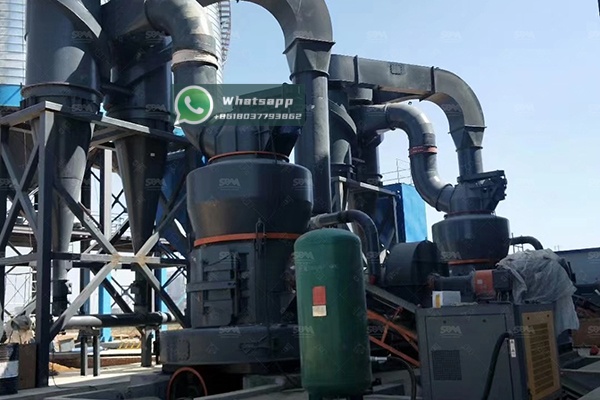The European titanium dioxide industry represents one of the most technologically advanced sectors in mineral processing, with ilmenite grinding standing as a critical stage in the production chain. As global demand for high-quality titanium dioxide pigments continues to grow, particularly in paints, plastics, and cosmetics, the efficiency and precision of ilmenite grinding operations have become paramount. This comprehensive analysis explores the specialized requirements for ilmenite comminution and presents advanced grinding solutions from Shanghai Zenith Machinery Co., Ltd., a leading manufacturer of ore grinding equipment with significant achievements in ultra-fine powder grinding technology.
Ilmenite (FeTiO₃) serves as the primary source for titanium dioxide production worldwide. This iron-titanium oxide mineral presents unique grinding challenges due to its moderate hardness (5-6 on Mohs scale), variable iron content, and the need for precise particle size distribution to optimize downstream processing. The conventional sulfate and chloride processes for TiO₂ production demand carefully controlled ilmenite particle sizes to ensure efficient chemical reactions and minimize energy consumption during subsequent processing stages.
The grinding circuit must achieve several critical objectives: producing consistent particle size distribution, minimizing overgrinding to reduce energy costs, maintaining product purity by avoiding contamination, and ensuring operational reliability in continuous production environments. European mills face additional challenges including stringent environmental regulations, high energy costs, and the need for automation compatibility with modern industrial standards.

Modern ilmenite grinding operations have evolved significantly from traditional ball milling approaches. The industry now employs sophisticated grinding systems that integrate multiple functions including classification, drying, and material handling. Shanghai Zenith Machinery has been at the forefront of this technological evolution, developing specialized equipment that addresses the specific requirements of ilmenite comminution while meeting European environmental and efficiency standards.
The selection of appropriate grinding technology depends on several factors: the initial ilmenite characteristics, required final particle size, production capacity, and the specific TiO₂ production process employed. For the sulfate process, which accounts for approximately 40% of European TiO₂ production, coarser grinds may be acceptable, while the chloride process demands finer, more uniform particle distributions to ensure fluidized bed reactor efficiency.
Shanghai Zenith Machinery offers a comprehensive range of grinding equipment suitable for various stages of ilmenite processing. Two products stand out for their particular relevance to European titanium dioxide production requirements: the LM Vertical Grinding Mill and the LUM Ultrafine Vertical Mill.
The LM Vertical Grinding Mill represents an ideal solution for primary ilmenite grinding applications. Its integrated design combines crushing, grinding, powder selection, drying, and material conveying in a single compact unit, offering significant advantages for European operations where space constraints and energy efficiency are critical concerns.
| Model | Plate diameter (mm) | Capacity (t/h) | Output fineness (μm) | Max feed size (mm) | Main motor (kW) |
|---|---|---|---|---|---|
| LM130K | 1300 | 10-28 | 170-40 | <38 | 200 |
| LM190K | 1900 | 23-68 | 170-40 | <45 | 500 |
| LM280K | 2800 | 50-170 | 170-45 | <50 | 1250 |
The LM series demonstrates exceptional performance in handling ilmenite’s abrasive characteristics while maintaining consistent product quality. The grinding rollers operate with hydraulic pressure systems that can be adjusted according to ilmenite hardness variations, ensuring stable operation even with fluctuating feed quality. The integrated drying capability is particularly valuable for European operations where ilmenite may arrive with varying moisture content, eliminating the need for separate drying equipment and reducing overall energy consumption.

For applications requiring ultra-fine ilmenite powders, particularly in advanced chloride process facilities, the LUM Ultrafine Vertical Mill offers unparalleled performance. This advanced grinding system integrates grinding, drying, classifying, and transportation functions while occupying minimal space—a significant advantage for European plants where real estate costs are substantial.
| Model | Main machine power (kW) | Capacity (t/h) | Size distribution D97 (μm) |
|---|---|---|---|
| LUM1525 | 220-250 | 1.6-11.5 | 5-30 |
| LUM1632 | 280-315 | 2.0-13.5 | 5-30 |
| LUM1836 | 355-400 | 2.3-15 | 5-30 |
The LUM series excels in producing ilmenite powders with high content of end-fines, crucial for maximizing TiO₂ yield in modern production processes. Its intelligent control system allows for precise adjustment of operating parameters to accommodate variations in ilmenite composition, a common challenge when processing material from different European sources. The mill’s advanced classification system ensures tight particle size distribution, reducing the fraction of both oversize and undersize particles that can negatively impact downstream processing efficiency.
European titanium dioxide producers face unique operational challenges that influence grinding equipment selection and configuration. Energy efficiency represents perhaps the most significant consideration, with electricity costs in Europe typically 30-50% higher than global averages. Both the LM and LUM series from Zenith address this concern through optimized grinding mechanics and reduced system power consumption compared to traditional technologies.
Environmental compliance represents another critical factor. European regulations governing dust emissions, noise levels, and water usage require grinding systems with integrated environmental controls. Zenith’s vertical mill designs incorporate multiple sealing systems, efficient dust collection integration points, and water-free operation that align with EU industrial emission standards.
Maintenance requirements and operational reliability also weigh heavily in equipment selection decisions. The modular design of Zenith’s grinding mills facilitates quick replacement of wear parts, with specially developed materials for grinding elements that extend service life when processing abrasive ilmenite. Remote monitoring capabilities allow European operators to optimize performance and anticipate maintenance needs, reducing unplanned downtime that can significantly impact production economics.
The selection of appropriate grinding technology directly influences the overall economics of titanium dioxide production. A comprehensive analysis of operating costs reveals that grinding typically accounts for 25-35% of total energy consumption in the ilmenite-to-TiO₂ conversion process. Advanced grinding systems like Zenith’s LM and LUM mills can reduce specific energy consumption by 20-30% compared to traditional technologies, representing substantial operational savings over equipment lifetime.
Beyond direct energy costs, the particle size distribution achieved during grinding significantly impacts downstream process efficiency. Optimal ilmenite particle size reduces reaction times in both sulfate and chloride processes, increases TiO₂ recovery rates, and improves product quality characteristics such as brightness and opacity. The precise control offered by modern grinding systems thus delivers benefits throughout the production chain, not merely in the comminution stage.

The evolution of ilmenite grinding technology continues as European producers face increasing pressure to improve sustainability while maintaining competitiveness. Several emerging trends will likely shape future grinding system requirements:
Digitalization and Industry 4.0 integration represent perhaps the most significant development. Advanced grinding systems increasingly incorporate sensors, data analytics, and machine learning algorithms to optimize performance in real-time. Zenith’s equipment designs already accommodate these trends with built-in connectivity and compatibility with plant-wide control systems.
Sustainability considerations are driving development of grinding systems with reduced carbon footprints. This includes not only lower energy consumption but also designs that facilitate use of renewable energy sources and reduced consumption of wear materials. The compact footprint of vertical grinding systems additionally supports this trend by reducing the embodied energy in plant construction.
Flexibility in processing varying ilmenite qualities is becoming increasingly important as European producers diversify supply sources. Modern grinding systems must accommodate wider variations in feed material characteristics without compromising product quality or operational efficiency. The adjustable operating parameters and robust construction of advanced grinding equipment address this requirement effectively.
The grinding of ilmenite for titanium dioxide production in European mills demands sophisticated technology that balances operational efficiency, product quality, and regulatory compliance. Shanghai Zenith Machinery’s specialized grinding equipment, particularly the LM Vertical Grinding Mill and LUM Ultrafine Vertical Mill, offers European producers advanced solutions that address these complex requirements. Through continuous innovation and understanding of the unique challenges in titanium dioxide production, Zenith provides grinding technology that supports the European industry’s competitiveness in global markets while meeting stringent environmental standards.
As the titanium dioxide industry continues to evolve, the role of advanced grinding technology will only increase in importance. Partnerships between European producers and specialized equipment manufacturers like Shanghai Zenith Machinery will be essential in developing next-generation solutions that further enhance efficiency, sustainability, and product quality in this vital industrial sector.